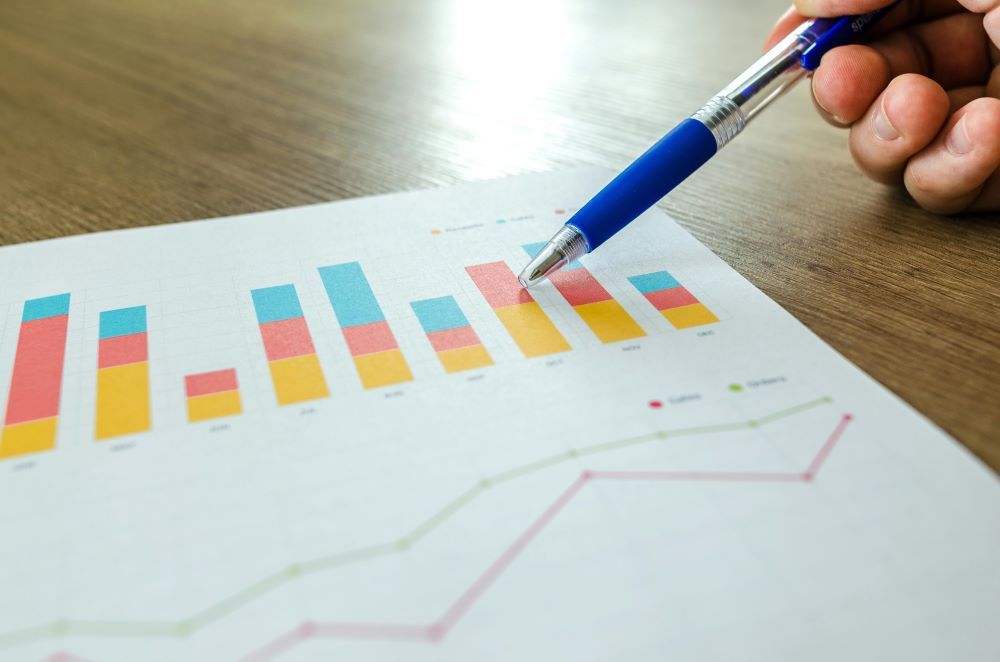
Predictive analytics is transforming customer service. Companies can now anticipate customer needs, streamline customer support, and personalize interactions in ways that were once unimaginable.
There are business use cases for predictive analytics in customer service that prove just how innovative, accurate and personalized customer engagement can now be.
What is Predictive Analytics in Customer Service?
Predictive analytics uses past data to forecast future outcomes. Statistics, data mining, and artificial intelligence can all be used in predictive analytics to identify patterns and trends in a set of data. These patterns and trends are then used to create a statistical model to generate predictions.
When used specifically in customer service, predictive analytics can forecast future customer behavior, helping businesses make decisions that improve customer satisfaction and loyalty.
Predictive customer analytics analyzes a wide range of data – from purchase history to browsing behavior and social media activity – to give companies insights into customer preferences, needs, and potential challenges.
Companies can then use these insights to tailor customer interactions, improve their satisfaction levels and engage with any customers identified as likely to churn. The outcome: better experiences for customers, and better sales and loyalty for companies.
Our Favorite Examples of Predictive Analytics in Customer Service
1. Predicting Customer Churn
Companies can use predictive analytics to identify customers who may be likely to stop using their services, also known as "churn." By analyzing factors such as decreased engagement, negative feedback, or frequent service complaints, predictive models can score each customer based on their churn risk.
Company Use Case: Netflix uses predictive analytics to identify subscribers who are at risk of canceling their service. A user’s viewing habits, engagement levels, and account activity are analyzed and if someone is flagged as a churn risk, Netflix can proactively offer personalized recommendations or promotions to try to retain these customers.
2. Product Demand Planning
Predictive analytics can estimate how much traffic an e-retailer or brick and mortar store is likely to receive on any date, based on customer traffic patterns. Companies can then plan their staffing and inventory levels to optimize customer experience, avoid missed sales and reduce costs from overstocking. Product demand planning is especially useful during holiday shopping seasons.
Company Use Case: Walmart uses predictive analytics to forecast product demand and ensure optimal inventory levels across its stores. This helps maximize sales by reducing costs from excess stock or missed sales due to shortages. It also improves the shopping experience for customers by ensuring popular items are well-stocked.
3. Dynamic Pricing
Dynamic pricing algorithms analyze market data and customer behavior to help a company optimize pricing and maximize its revenue. In real time, predictive analytics can process current demand, buying trends and competitor pricing to advise companies how to price their own product.
Company Use Case: Delta and other airlines use predictive analytics for dynamic pricing. This allows them to adjust ticket prices based on factors like demand fluctuations, booking time, and competitor rates. Predictive customer analytics allows Delta to optimize both its revenue and seat occupancy.
4. Social Media Trend Monitoring
Predictive analytics can monitor conversations and customer feedback on social media platforms in real-time. This allows brands to track what is being said about their products and also identify emerging customer trends. By detecting changes in customer sentiment and preferences, companies can adjust their products or marketing strategies to best fit the moment.
Company Use Case: H&M uses predictive analytics to track social media conversations around emerging fashion trends and customer preferences. The company uses this data to stay ahead of the curve and apply the findings to its product development and marketing strategies.
Great Examples of Predictive Analytics Improving Personalization
1. Personalized Product Recommendations
Micro-targeting and personalized sales are extremely valuable to retailers because attention to detail keeps consumers coming back. E-commerce and retail companies use predictive analytics to analyze browsing behavior, purchase history, and demographic data to make product recommendations. Algorithms suggest products that customers are likely to be interested in, which can then be offered to them through marketing campaigns.
Company Use Case: Amazon uses predictive analytics to analyze past purchase behavior and browsing history. This helps the company personalize email recommendations, online ads and promotions, driving higher engagement and conversion rates. Amazon’s personalized recommendations drive engagement, increase sales, and improve the shopping experience by aligning it with each customer's unique preferences.
2. Enhancing Customer Loyalty Programs
Loyalty programs have a significant impact on customer retention and happiness. By predicting what types of rewards are most appealing to individual customers, predictive analytics helps maximize loyalty program effectiveness. Personalized rewards and incentives create a stronger emotional connection with customers and increase engagement.
Company Use Case: Starbucks uses predictive analytics to tailor its loyalty program by offering personalized rewards and promotions. Through the loyalty program, Starbucks can track individual buying habits such as what coffee you drink, where you buy it, and what time of day you purchase. Personalized rewards based on this data boost engagement and sales.
3. Predictive Maintenance Alerts
Predictive analytics can forecast when equipment or machinery is likely to fail based on data collected from sensors, past performance, and environmental factors. This allows for maintenance to occur before a breakdown, instead of the traditional method of reacting after equipment fails. Predictive maintenance alerts are growing in the consumer space as more products we buy are equipped with “smart” technology such as sensors and Wi-Fi connectivity.
Company Use Case: Tesla uses predictive analytics to monitor vehicle performance and proactively alert customers about maintenance needs. Alerting customers about potential issues before they occur reduces vehicle breakdowns and improves customer satisfaction.
4. Predictive Upselling and Cross-Selling
Predictive analytics can identify customers who are likely to be open to upselling or cross-selling opportunities. By analyzing past purchase data and behavior, algorithms can choose the best products to recommend during a customer service call or online interaction. Predictive upselling and cross-selling helps increase revenue, while also offering customers products that genuinely match their needs.
Company Use Case: T-Mobile and other telecom providers use predictive analytics to spot customers who may be interested in upgrading their phone plans. The company can then offer these customers a more premium plan or add-ons based on their usage patterns, past purchases, and customer service interactions. This strategy has helped T-Mobile increase its average revenue per user.
The Most Innovative Use Case: Empathy Detection
Sentiment analysis models can monitor customer communications as they happen and examine the emotions behind the words and vocal tone used in an interaction. These systems can then classify a customer’s sentiment as positive, negative or neutral, and even recognize specific emotions such as anger and sadness. If a customer is especially upset, this information can help agents tailor the level of empathy in their responses or escalate issues to higher-level support.
Empathy detection is one of the most innovative use cases for predictive analytics in customer service because it can gauge the emotional needs of customers in real-time. Sentiment analysis models can suggest the agent use calming language, avoid overly technical explanations, or offer an apology early in the interaction. Empathy detection helps humanize customer service interactions, making customers feel understood and valued. This can reduce customer churn, increase loyalty, and improve their feelings toward a brand.
Technology is sometimes criticized for taking humanity out of customer service. But innovative uses of predictive analytics such as empathy detection actually allow for customer interactions to become more personal, even as they are optimized in other ways. Predictive analytics is shaping the future of customer service by helping companies anticipate needs, prevent problems, and build connections that create better customer experiences.


